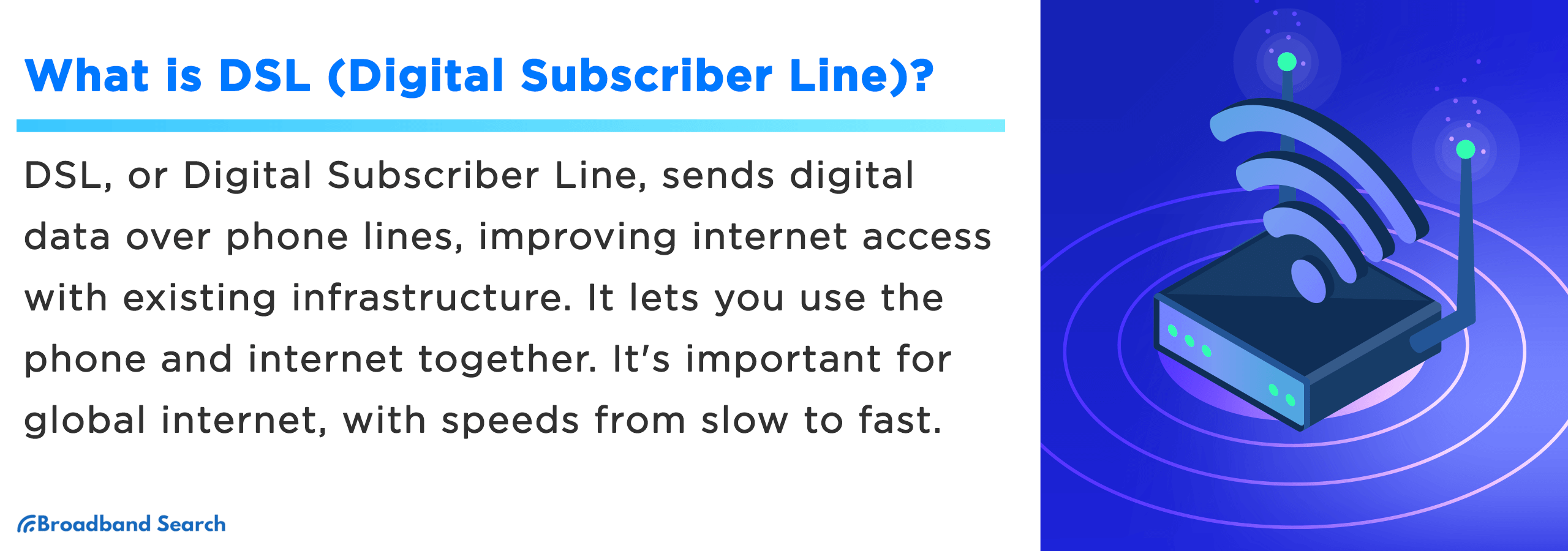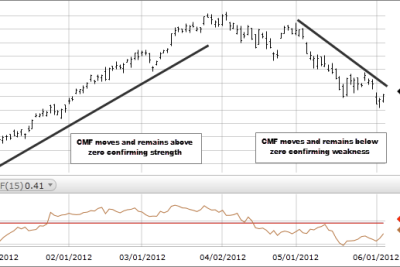
DSL: Definition, Meaning, Facts, and Essential Insights

In the ever-evolving landscape of internet connectivity, one term that frequently surfaces is DSL, which stands for Digital Subscriber Line. If you're wondering what is DSL, this technology utilizes existing telephone lines to deliver high-speed internet access. It has become a vital component of broadband services, especially in areas where cable or fiber-optic services are less accessible. Recognizing the importance of DSL in both urban and rural environments is crucial for understanding how many households connect to the internet today.
Understanding DSL what is and how it functions requires diving into a variety of aspects, including its historical background, the different types of DSL technologies, and the advantages and limitations associated with its use. As we explore the intricacies of this technology, it becomes evident that while a DSL connection offers unique benefits, it is not without its challenges, especially in comparison to newer internet options. This article serves as an in-depth exploration of DSL, providing essential insights into its operation and relevance in the current technological landscape.
What is DSL?
At its core, DSL is what allows households to achieve high-speed internet without needing dedicated lines or complex installations. By leveraging the existing telephone infrastructure, DSL makes it possible for users to enjoy internet access alongside traditional voice services. This is especially important in regions where laying new cabling for high-speed internet would be economically unfeasible or too disruptive.
DSL stands out for its ability to provide faster internet speeds compared to traditional dial-up services. Although the exact speeds can vary based on several factors, the fundamental technology utilizes frequency division multiplexing to separate voice and data transmission, allowing simultaneous use of the telephone line for both internet and calls.
Historical Background of DSL
The origins of DSL technology can be traced back to Bell Communications Research in the late 1980s. The aim was to develop a system that could support high-bitrate digital subscriber connections for telecommunications and on-demand video services. As the demand for internet services grew, DSL what is became clear: its potential to provide on-the-go connectivity was unmatched. The first commercial DSL services were launched in the mid-1990s, paving the way for widespread adoption across various geographical regions.
Initially, these services targeted businesses, but as internet usage surged among consumers, telecommunication companies began to expand their offerings to residential customers as well. Over the years, several variations of DSL technology have emerged, each designed to cater to different customer requirements and improve performance.
Types of DSL Technologies
Understanding the different types of DSL technologies is key to recognizing their unique features and capabilities. Here are some of the most prevalent types:
- Asymmetric DSL (ADSL): This is the most common type of DSL connection, characterized by its higher download speeds compared to upload speeds. ADSL is particularly suited for users who primarily consume content online, such as streaming and browsing.
- Symmetric DSL (SDSL): Unlike ADSL, SDSL offers equal upload and download speeds. This makes it an excellent choice for businesses that require reliable and fast data transfer for tasks such as video conferencing and file sharing.
- High-Bitrate DSL (HDSL): Originally designed for business use, HDSL supports higher data rates than ADSL, making it beneficial for companies with extensive data transmission needs.
- Rate-Adaptive DSL (RADSL): This technology adjusts its speed based on the quality of the connection; it can optimize performance in areas where signal quality might fluctuate.
- Very-high-bit-rate DSL (VDSL): VDSL provides significantly faster data rates than ADSL, suitable for applications requiring high bandwidth, such as high-definition video streaming.
How DSL Works
Now that we have an understanding of what is a DSL technology, let's discuss how it works. DSL operates by splitting the frequency of the telephone line into multiple channels. The lower frequency range is utilized for voice transmissions, allowing users to make phone calls while simultaneously using the internet.
Data intended for internet use is transmitted over a higher frequency band. The DSL modem at either end of the telephone line modulates and demodulates the data. Essentially, the modem converts digital internet data into analog signals for transmission and vice versa. To establish a connection, the modem must also communicate with the Digital Subscriber Line Access Multiplexer (DSLAM), which aggregates multiple DSL connections into a single high-capacity link.
Advantages of DSL
One of the primary advantages of DSL technology is its ability to deliver high-speed internet without requiring significant infrastructure changes. This can be particularly advantageous in rural or underserved areas. Here are some other notable benefits:
- Availability: Since DSL uses existing telephone lines, it is widely available in many regions where other forms of broadband may not be.
- Simultaneous usage: Users can make voice calls while using the internet, which is a significant convenience.
- Dedicated connection: Each user has their dedicated connection, ensuring consistent performance without the overcrowded bandwidth typical of other network types.
- Cost-effectiveness: DSL service is often more affordable than cable or fiber-optic options, particularly for basic internet needs.
Limitations of DSL
Despite its advantages, DSL is what might be considered an outdated technology when comparing it to more recent developments like fiber-optic internet. Several limitations are associated with DSL:
- Distance sensitivity: DSL performance diminishes with distance from the telephone exchange. The farther a user is from the exchange, the lower the internet speeds.
- Limited upload speeds: Particularly for ADSL, upload speeds are typically slower than download speeds, which may not meet the needs of users who regularly send large files or stream video content.
- Competition from cable and fiber: Many users are switching to faster, more reliable alternatives, contributing to a decline in DSL subscriptions.
Comparison with Other Internet Technologies
To truly understand the relevance of DSL, it’s essential to compare its features with other prevailing internet technologies such as cable and fiber-optic services.
- Cable Internet: While DSL options are limited by distance from the central office, cable internet uses coaxial cable, allowing for higher speeds and performance that often surpass DSL capabilities.
- Fiber-optic Internet: The most advanced option available today, Fiber-optic internet uses light to transmit data, offering incredibly fast speeds that DSL cannot match. However, fiber infrastructure is not as widely available as DSL.
- Satellite Internet: This option can provide coverage in very remote areas but often suffers from high latency and slower speeds compared to DSL.
Current Trends and Future of DSL
As the internet landscape continues to evolve, it is important to examine the direction DSL technology is taking. With the rise of more advanced options like fiber-optic internet, DSL subscriptions have been steadily declining. Telecommunication companies are increasingly focusing on upgrading their networks to fiber, while maintaining DSL services for legacy customers who may not have access to newer options.
Technological advancements are also paving the way for improved DSL performance, including techniques such as vectoring that can help to mitigate some of the limitations associated with traditional DSL connections. However, as users continue to demand faster internet speeds and lower latency, the long-term future of DSL remains uncertain amid increasing competition from other technologies.
Conclusion
Understanding what is dsl technology is vital in a world where high-speed internet connectivity is essential. DSL has played a crucial role in bridging the digital divide, providing internet access to millions, especially in areas where other options are lacking. However, as the pace of technological advancement accelerates, it becomes clear that while DSL what is remains relevant today, its future is clouded by competition from faster and more reliable internet technologies.
For those interested in learning more about a DSL connection or considering its viability for their internet needs, it is imperative to weigh its advantages and limitations against emerging alternatives in the market.
Frequently Asked Questions (FAQs)
1. What is DSL?
DSL, or Digital Subscriber Line, is a technology used to transmit high-speed internet over existing telephone lines.
2. How does DSL differ from cable internet?
DSL uses telephone lines, while cable internet utilizes coaxial cables. Cable internet tends to offer faster speeds compared to DSL.
3. Can I use DSL and make phone calls at the same time?
Yes, DSL allows users to simultaneously use the telephone line for voice calls while accessing the internet.
4. What affects DSL internet speeds?
DSL speeds are primarily affected by the distance from the subscriber to the telephone exchange, the quality of the telephone lines, and external interference.
5. Is DSL still a viable option for internet connectivity?
DSL may still be a suitable choice in areas with limited options, but users seeking high-speed internet may want to consider faster alternatives like fiber-optic services.
Did you find this article helpful? DSL: Definition, Meaning, Facts, and Essential Insights See more here Education.
Leave a Reply






Related posts